
Why Settle For A Hutch When You Can Have A Warren?
We all know that pet rabbits need a hutch and a run. But what if they could enjoy the luxuries of a warren in your own back garden, complete with rabbit burrows and tunnels, without having to dig under the lawn and flower beds?
Connecting a rabbit hutch to a run is a simple way to keep bunnies happy. A set up such as Omlet’s Eglu Go is part of the solution, combining the indoors and outdoors that rabbits require. But there are other, more ingenious ways of giving your bunnies the perfect home.
Drain Pipes For Rabbits?
Like all animals, rabbits have inbuilt instincts that need satisfying. Rabbit tunnels and rabbit burrows are as central to their requirements as a bathroom and a comfy bed are to you. In the wild, rabbits live in complex warrens, made up of many private and communal living spaces linked by underground tunnels. This instinct to move around underground is strong in pet bunnies too. And yet, for many, it is an instinct that remains unsatisfied.
This was the inspiration behind the Zippi Rabbit Tunnel System, a design that builds and improves on the concept of drain pipes for rabbits. Its durable, flexible, easy-to-clean tunnels are a neat DIY solution that gives rabbits the tunnelling their instincts demand, and with no extra digging required.
A Rabbit Tunnel, And Then Some!
The Zippi Rabbit Tunnel System’s burrow pipes provide easy access from hutch to run, and a cosy bolt hole too. They can link runs to playpens too, enabling your kids to become part of the home warren.
Because rabbits come in all sizes, the Zippi Rabbit Tunnel System is built to accommodate the very largest of breeds, and is designed with a flexibility that puts the average drainpipe to shame:
- It comes in 90cm sections, with no limit on the length and complexity of your set up.
- All fixings and connectors are supplied.
- The Zippi doesn’t think in straight lines – it can curve around any garden feature if required.
- In addition to the standard 90cm tunnel, there are optional Zippi T-Junctions, Corner Pieces, Lock-out doors, and mid-tunnel Look-out sections which double as Hay Racks.
- Support hoops lift the Zippi from the ground, enabling the grass to grow beneath it.
- The unique design provides ventilation and drainage, and keeps out any would-be predators.
Bunny Bliss
Rabbits make great pets. They don’t disturb the peace, they don’t hunt birds and rodents, and they don’t require constant walking and training. Coupled with the fact that they are cute and full of character, this has made them a hugely popular choice of pet in recent years.
But it’s not just about keeping you happy, it’s about delivering the bunny bliss your pet deserves. With a hutch and run, you’ve provided a cosy home. But add the Zippi Rabbit Tunnel System, and you’ve got a wonderful warren that represents the ultimate des res for rabbits.
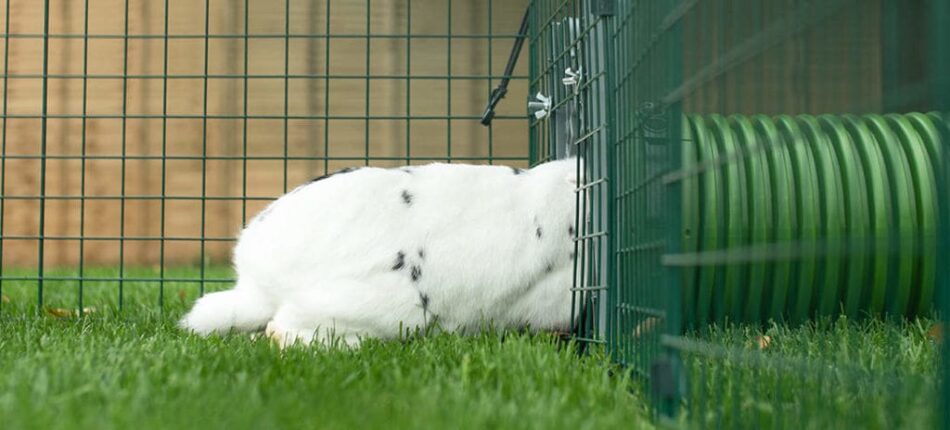
This entry was posted in Rabbits on November 21st, 2018 by linnearask

It doesn’t matter if you’ve already put up your tree or you’re a total Scrooge, if you’ve got dogs or guinea pigs, if you’re looking for a new home for your rabbit or just a treat for you chickens – there’s something for everyone in the Omlet Christmas Sale!
THE CHRISTMAS SALE HAS NOW ENDED
Terms and Conditions
Up to 20% off promotion is only valid from 19/11/18 – 3/12/18. No promo code required. Subject to availability. Omlet ltd. reserves the right to withdraw the offer at any point. The discount cannot be transferred to delivery or courses. Excludes delivery. Offer is only valid on fully priced items and cannot be used on existing discounts or in conjunction with any other offer.
This entry was posted in Offers and promotions on November 18th, 2018 by linnearask
Introducing a new cat or kitten to your resident cat can be quite a daunting situation. One thing you don’t want to do is just put them together without any thought or preparation.
If you introduce the cats too soon or without easing them in they can become very hostile due to the fact that they might be feeling threatened or scared.
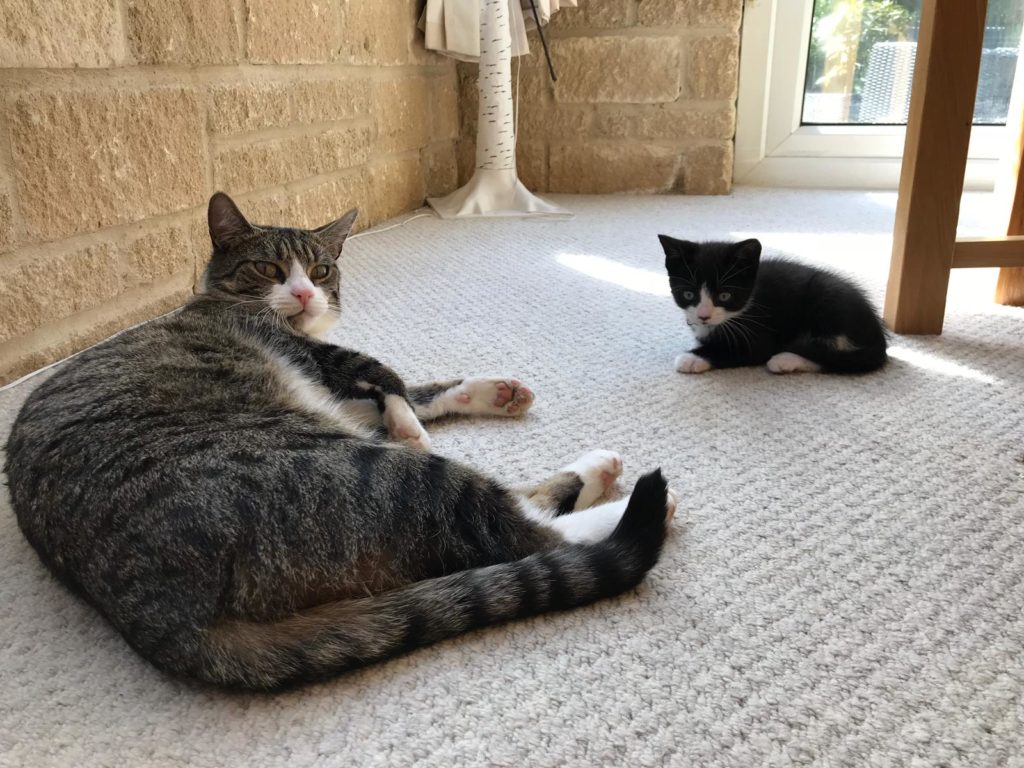
One thing to note particularly with cats is that once they feel this way about another cat it can be very hard to change their minds hence why a cautious and slow introduction is the best way to ensure both animals feel safe and happy together.

Unlike many animals and humans, cats don’t actually crave companionship from one of their own. They are perfectly happy being the only cat in the house. This isn’t to say they won’t enjoy the company of another cat it’s just they don’t have that need or desire for company that you are used to seeing in other animals.
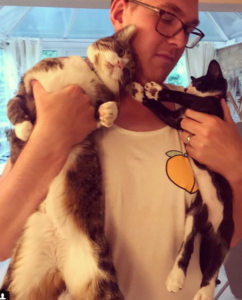 Introducing a new kitten to an existing adult cat might be easier as the older cat might not feel as threatened due to the fact that the kitten isn’t sexually mature. However it is worth noting that a kitten will be very lively and playful which for a resident older cat might be quite stressful so it’s important you give your existing cat some down time in a separate room to chill out.
Introducing a new kitten to an existing adult cat might be easier as the older cat might not feel as threatened due to the fact that the kitten isn’t sexually mature. However it is worth noting that a kitten will be very lively and playful which for a resident older cat might be quite stressful so it’s important you give your existing cat some down time in a separate room to chill out.
Initially it is best to keep the cats in separate rooms of your house. One in the living room and one in the spare room for example. Place all the items your new cat will need in this room, litter tray, food, water etc. Make sure there is no competition for food, litter trays and sleeping areas. Create safe separate spaces for both of them to co-exist.
Cat diffusers- These can be used a couple of days before you bring your new cat into the home, these are designed to emit pheromones which relax and soothe your cat which makes them feel safe and secure.
If you are introducing a kitten, you can use a dog crate for the initial stages. Top tip: get your kitten used to the crate before you place the kitten in the same room as the resident cat, you can do this by using it in a separate room with the door open for the kitten to become familiar with the crate.
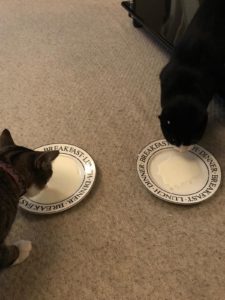
Height is another great asset for cats particularly when they’re feeling scared or threatened. Make sure there is enough high areas or places in your house for the cats to access to give themselves a bit of time to calm down.
Cats have a good sense of smell, therefore unfamiliar scents can be stressful for them, especially when they know it’s from another cat. The idea of scent swapping is an easy but super effective way to safely get the cats familiar with one another. Try swapping their bedding nightly also stroke both cats separately but don’t wash your hands in between, this will cause their scents to become mixed up and they’ll start feeling more familiar with one another even before they’ve met!
Common ground- for initial introductions you want to make sure that the cats are meeting in a neutral area that’s not assigned to either of them but ensure that they have access back to their own safe spaces if they want to leave. In this time, initially just leave them to it, they will assess each other from afar and when they feel comfortable enough to approach each other they will. Try to refrain from picking them up and forcing them to be closer together.
One great way to start the cats bonding is to feed them both at this time, in separate bowls but with a good enough distance between them.
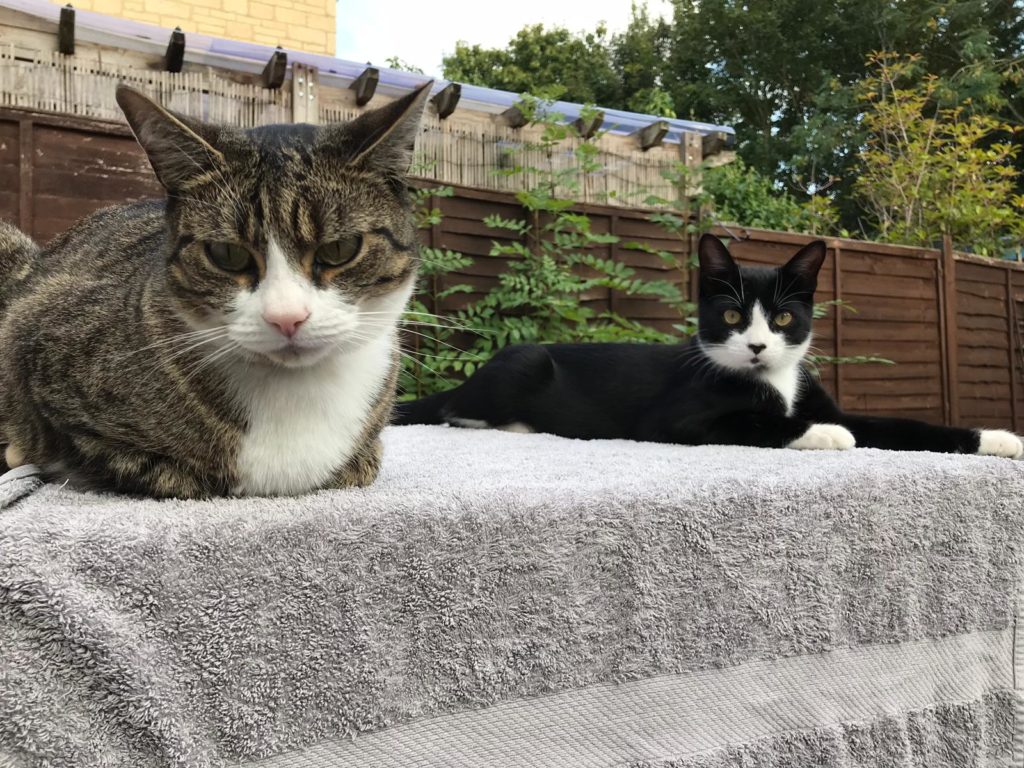 Hissing and moaning isn’t unusual but it just lets you know where they are at, perhaps slow the process down and keep them separate for a few more days and then try again.
Hissing and moaning isn’t unusual but it just lets you know where they are at, perhaps slow the process down and keep them separate for a few more days and then try again.
Most importantly to create a harmonious environment for your new and existing cat is to make sure there are enough separate areas for them to eat, drink, sleep and go to the toilet, this is a sure fire way to ensure there’s no unnecessary fights!
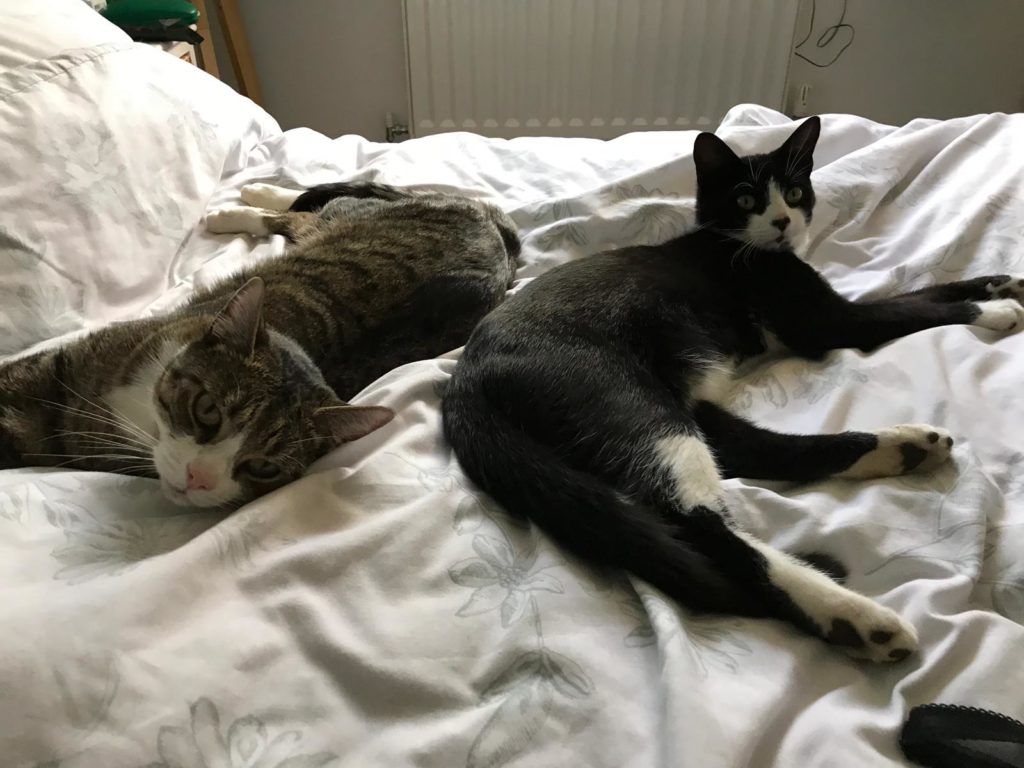
This entry was posted in Cats on November 16th, 2018 by linnearask

Guinea pigs are amazing, social pets that have lots to offer the families that share a home with them. But do you know how they got their name, how much (or little) they sleep, and how many toes they have? These 12 facts you might not know about your guinea pig will increase your love and appreciation for your cavies.
1. What’s in a name?
“Guinea pig” is actually a misnomer. They aren’t from Papua New Guinea — rather, they originate from the Andes mountains of Peru. The first part of their name is due to them being sold for a guinea (an old English coin) when sailors brought them from South America.
2. Not pigs at all
The second half of a guinea pig’s name is also a misnomer. They aren’t related to pigs at all — they’re actually members of the rodent family. Guinea pigs are so named because of the grunting noises they make, which reminded people of piglets. The other term for guinea pigs is “cavies”, or singular, “cavy.” It comes from their scientific name Cavia porcellus, with porcellus meaning “little pig.”
3. Even more misnomers
Like pigs, male guinea pigs are called boars and females are called sows. But, instead of baby guinea pigs following suit and being called piglets, they’re called pups. Even though their names imply they are similar to puppies at birth, this too, is incorrect. In reality, canine puppies and guinea pig pups have very little in common at birth.
4. Born ready
“Pups” are born with fur and their eyes open, and are very mobile from an early age. Most other species of rodents are born hairless and blind, unable to venture beyond their nest during the first few days of life. Guinea pig pups can see, walk, hear, and even have teeth. This gives them an advantage as prey animals in the wild.
5. Size and stature
Fully grown guinea pigs weigh between 1 and 3 pounds and are 8 to 16 inches long. Boars tend to be larger than sows, but should not be overweight. Guinea pigs are prone to obesity, which may be difficult to detect due to their oblong, potato-like shape. Cavies are considered overweight if you can’t feel their spine, ribs, or hips through their fat, or if they develop visible fat pads.
6. A longer lifespan than other rodents
Small pets aren’t known for their long lifespans, but guinea pigs actually live a relatively long life when they’re well cared for. The average lifespan of a domesticated guinea pig is 5-7 years.
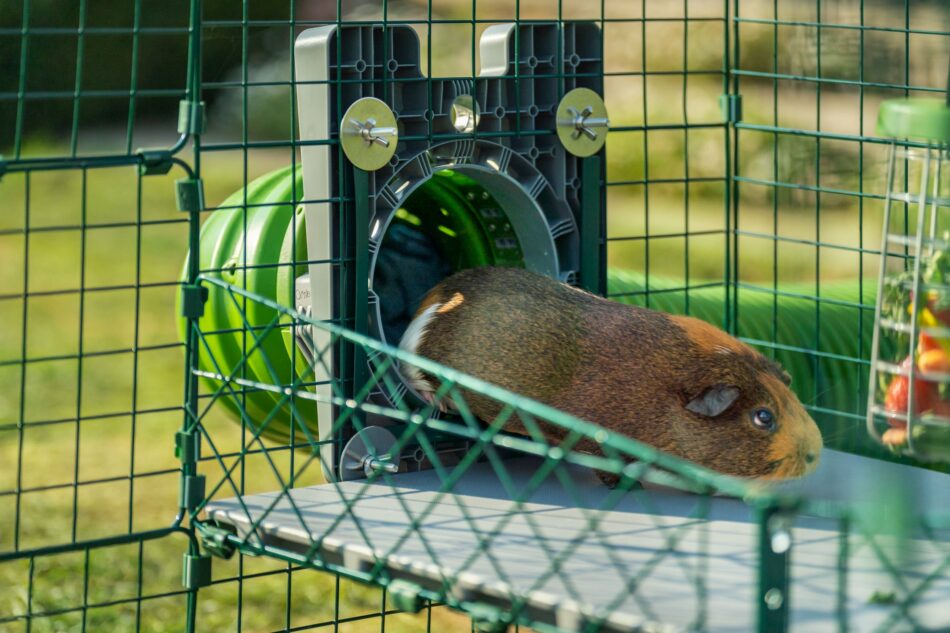
7. Abnormal number of digits
Guinea pigs have 4 toes on their front feet, but only 3 on their back feet. This brings their total toe count to 14. But, some guinea pigs may have more than the expected number of toes if they have a condition called “polydactyly” which is a genetic mutation that causes extra toes to grow.
8. Ever-growing teeth
Like other rodents, cavy teeth grow continuously throughout their lives. It’s important to give them food and treats to gnaw on to help them keep their teeth in check. Serving your guinea pigs’ favorite chews in a Caddi guinea pig treat holder will help keep their teeth-trimming treats at an accessible level.
9. Surprisingly little sleep
Guinea pigs don’t sleep much. In fact, they only sleep about 4-6 hours in a 24-hour period. They’re also proficient in power napping — taking short naps lasting anywhere from a few seconds to a few minutes, but usually not more than 30 minutes at a time. Cavies need a comfortable guinea pig hutch to get optimum rest during these short slumbers.
10. Very vocal
Guinea pigs have their own language, and are extremely vocal. Their broad range of noises include: purring, whining, shrieking, cooing, rumbling, hissing and teeth chattering. It’s very common for guinea pigs to greet their owners in what cavy keepers have dubbed a “wheek” — a happy, excited noise that a guinea pig emits.
11. Cavy companions
Guinea pigs are very social animals and need companionship to thrive. Their vast vocabulary and social relationships are best shared with other cavies. Bonded pairs are usually the happiest, but some guinea pigs will happily live in a social group of 3 or more. Remember to only keep same-gendered or spayed and neutered pairs together to avoid accidental litters.
12. A coat for every occasion
Guinea pigs come in a variety of colours and textures. Their different breeds create long and short coats with textures ranging from curly and wavy, to short and smooth, to no hair at all.
Owning guinea pigs with Omlet
Cavies are cute, quirky pets that the whole family can enjoy. By housing them in secure outdoor guinea pig hutches, you’ll be able to observe all of the wonderful attributes that your cavies display. Elevate their favourite foods and watch them exhibit these natural behaviours while observing the unique attributes that make guinea pigs some of the most entertaining and enjoyable pets to share your space with.
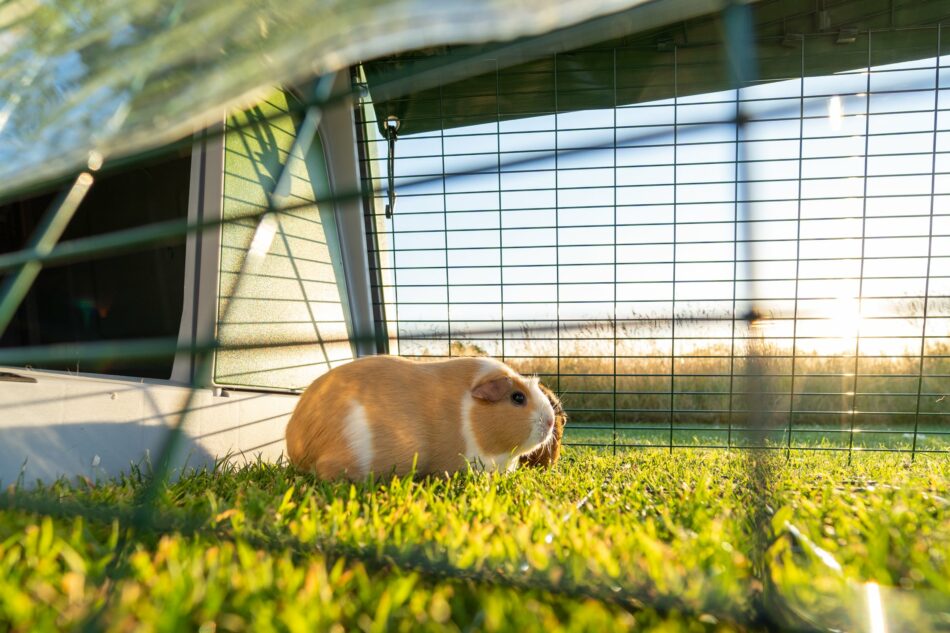
This entry was posted in Guinea Pigs on November 7th, 2018 by linnearask





 Introducing a new kitten to an existing adult cat might be easier as the older cat might not feel as threatened due to the fact that the kitten isn’t sexually mature. However it is worth noting that a kitten will be very lively and playful which for a resident older cat might be quite stressful so it’s important you give your existing cat some down time in a separate room to chill out.
Introducing a new kitten to an existing adult cat might be easier as the older cat might not feel as threatened due to the fact that the kitten isn’t sexually mature. However it is worth noting that a kitten will be very lively and playful which for a resident older cat might be quite stressful so it’s important you give your existing cat some down time in a separate room to chill out.
 Hissing and moaning isn’t unusual but it just lets you know where they are at, perhaps slow the process down and keep them separate for a few more days and then try again.
Hissing and moaning isn’t unusual but it just lets you know where they are at, perhaps slow the process down and keep them separate for a few more days and then try again.


